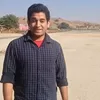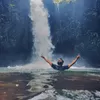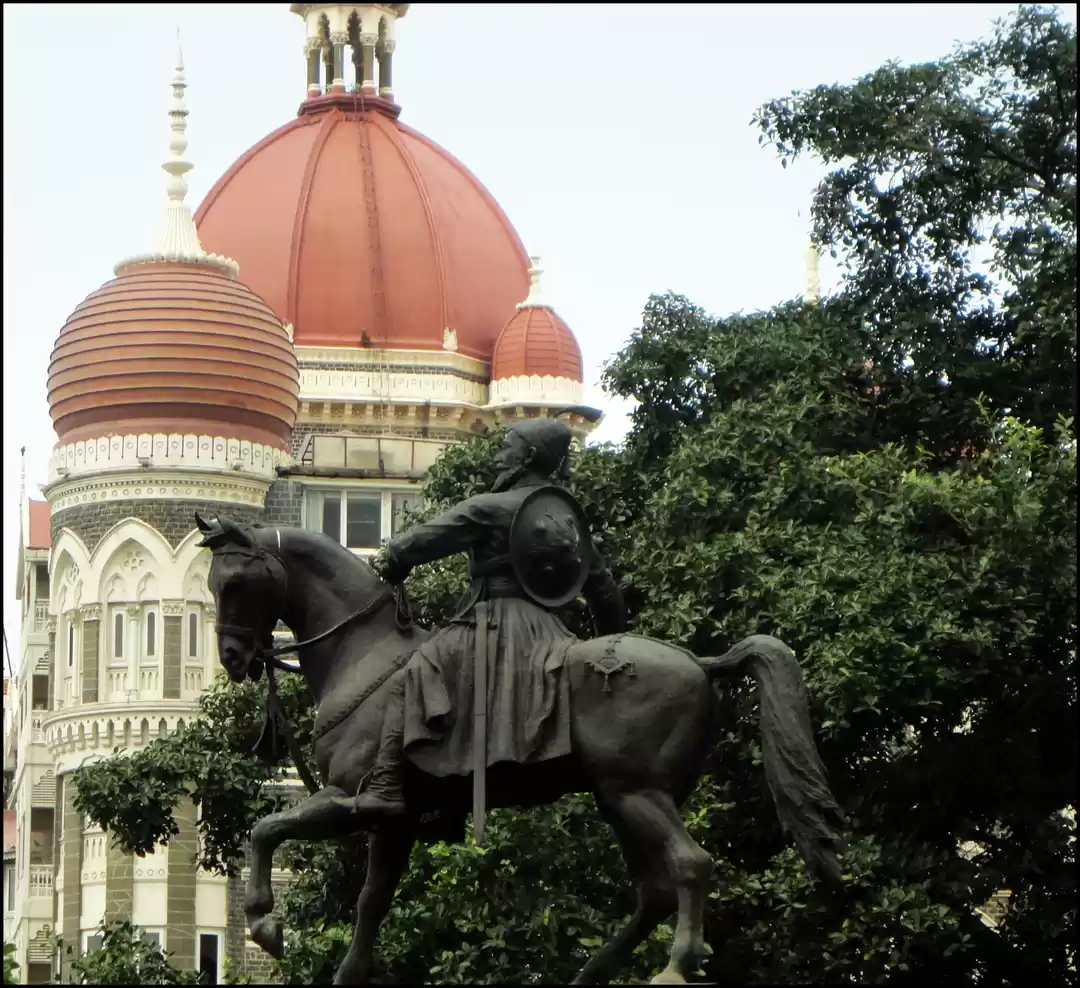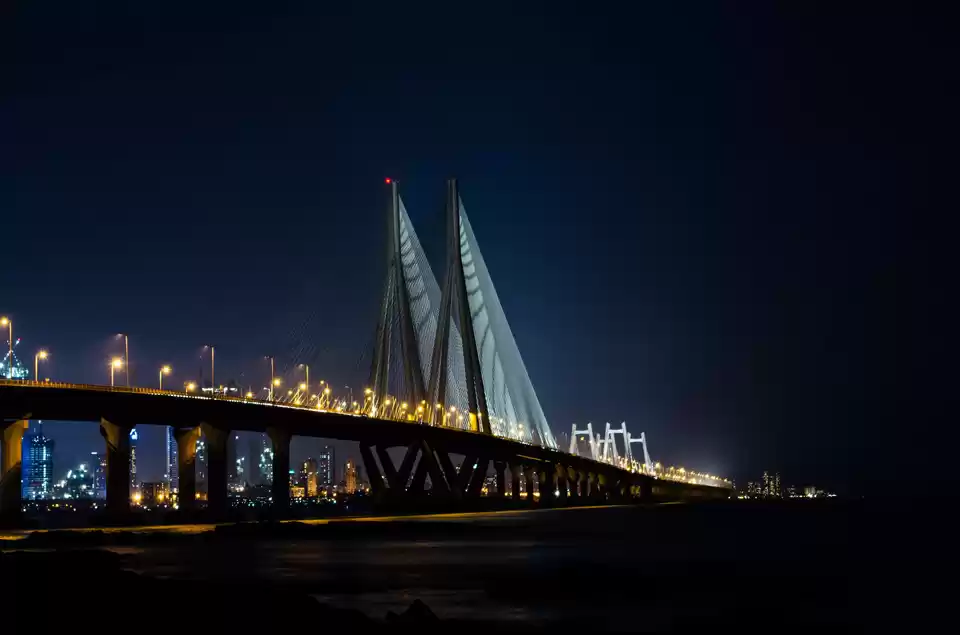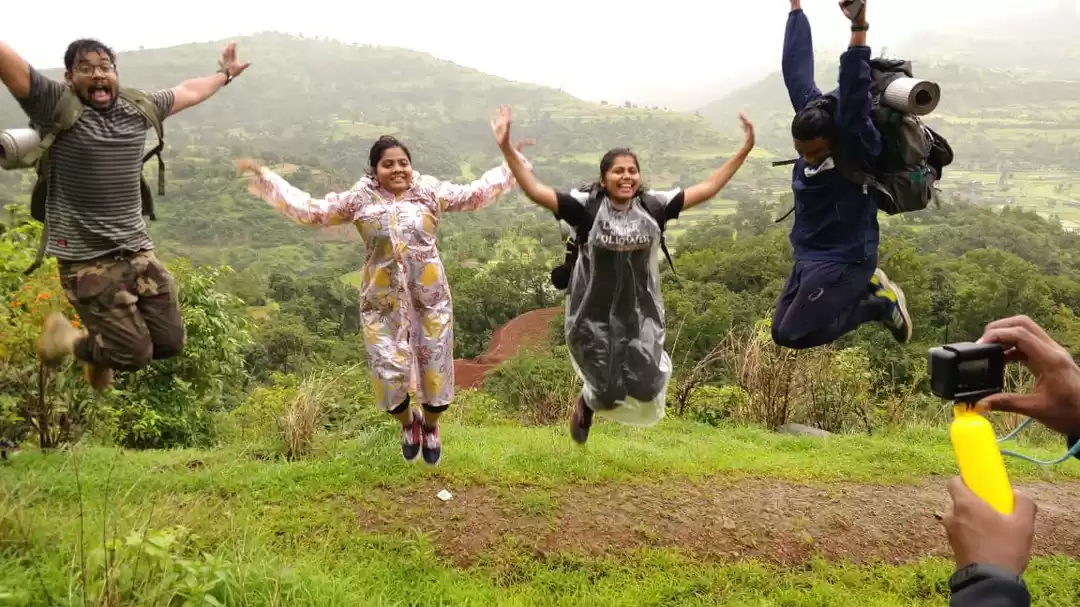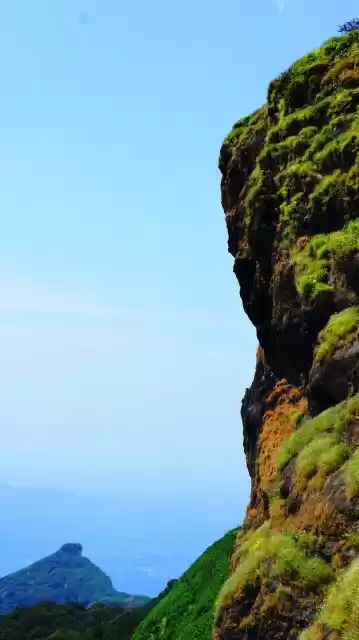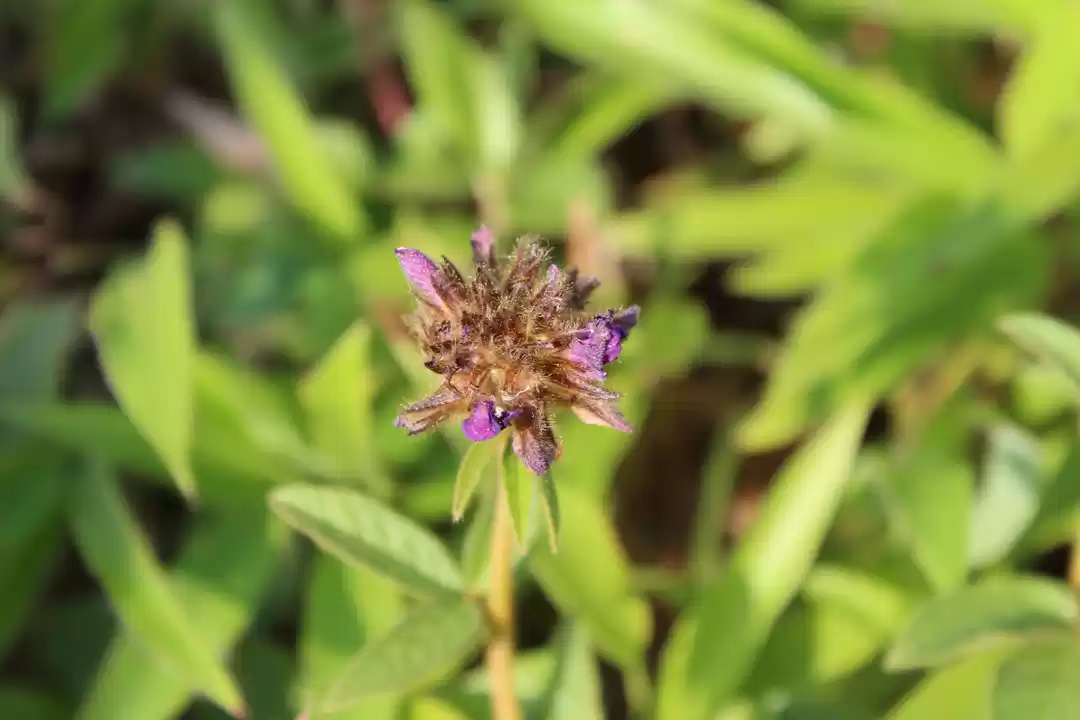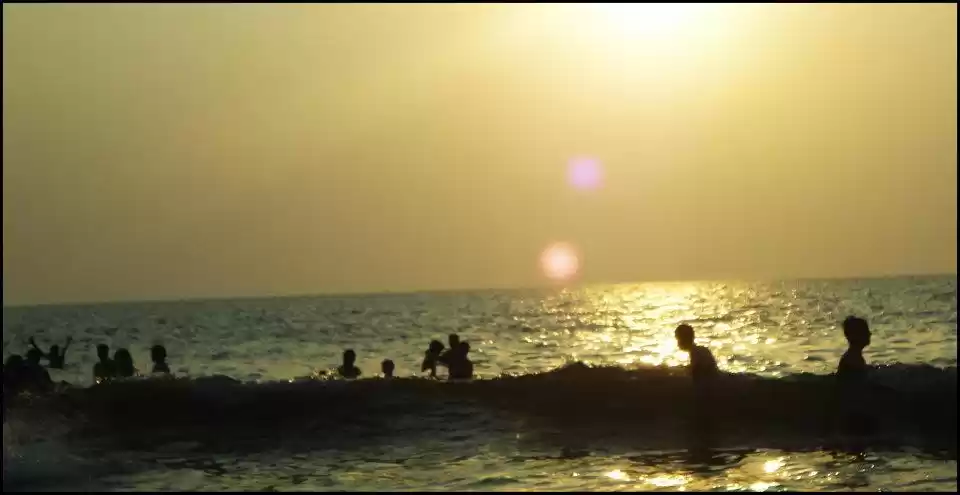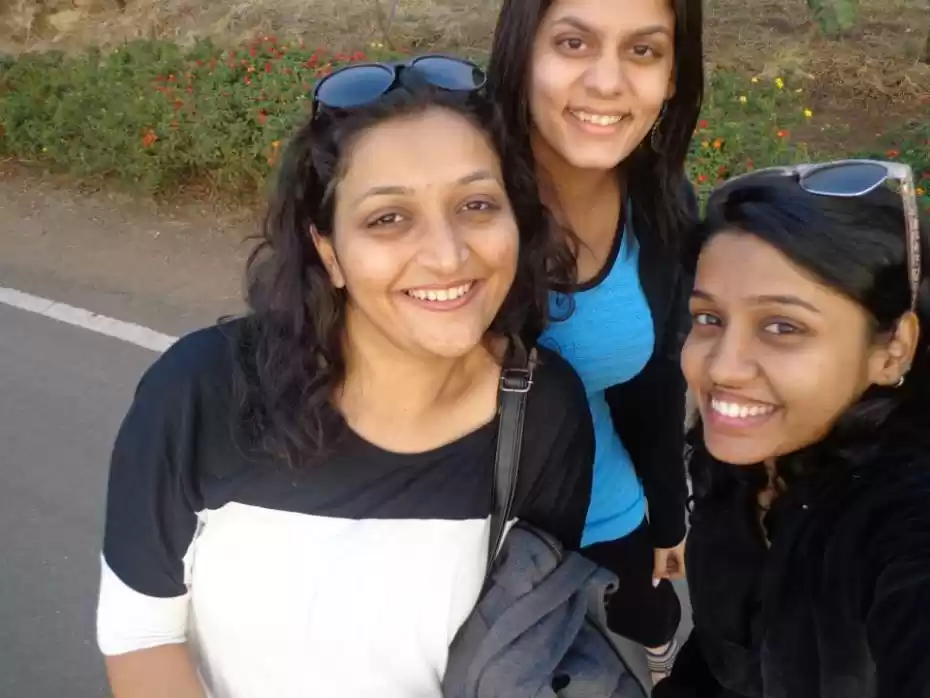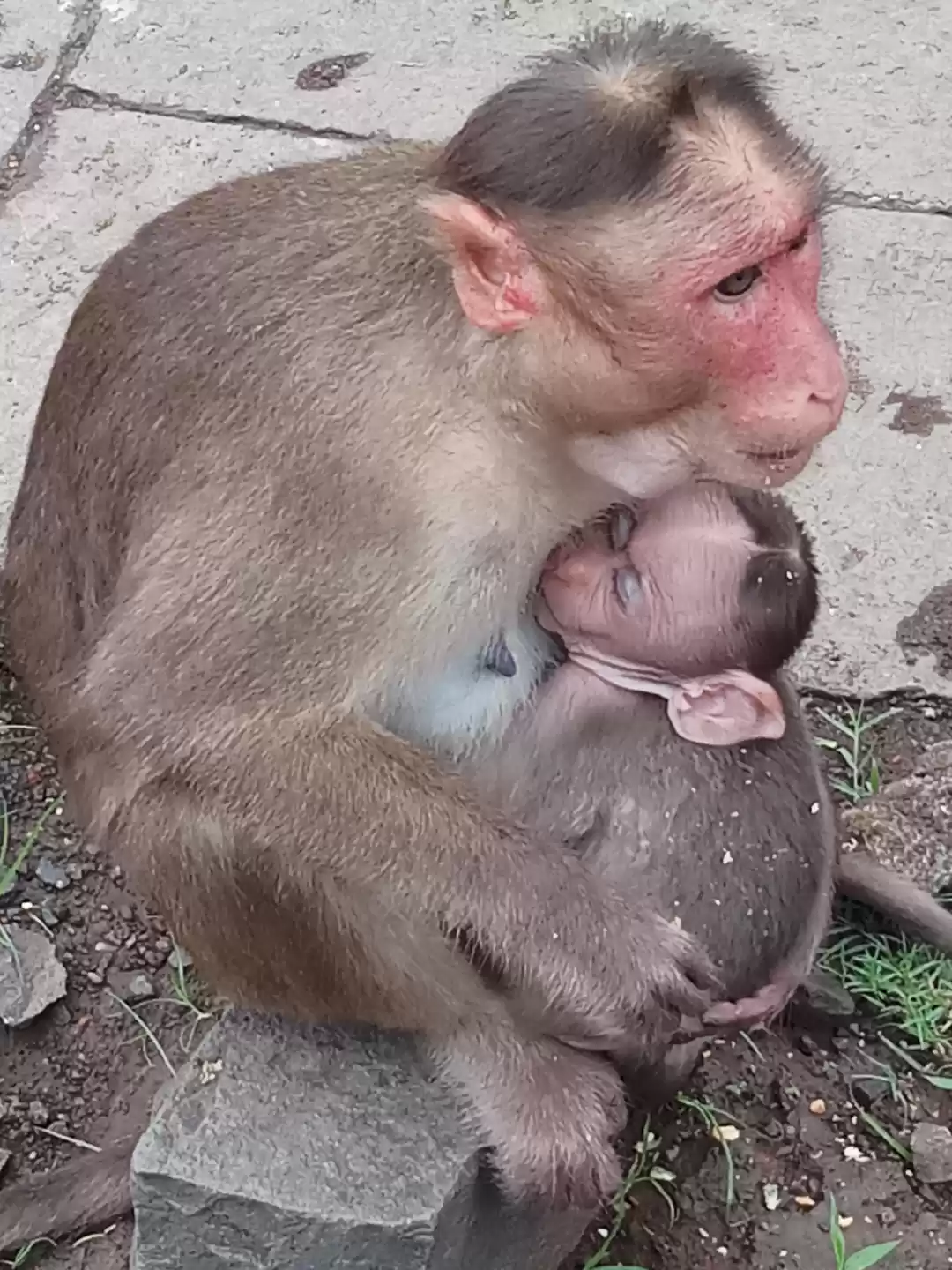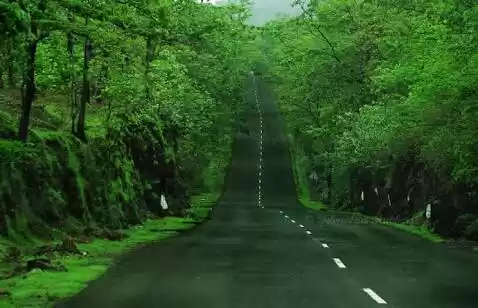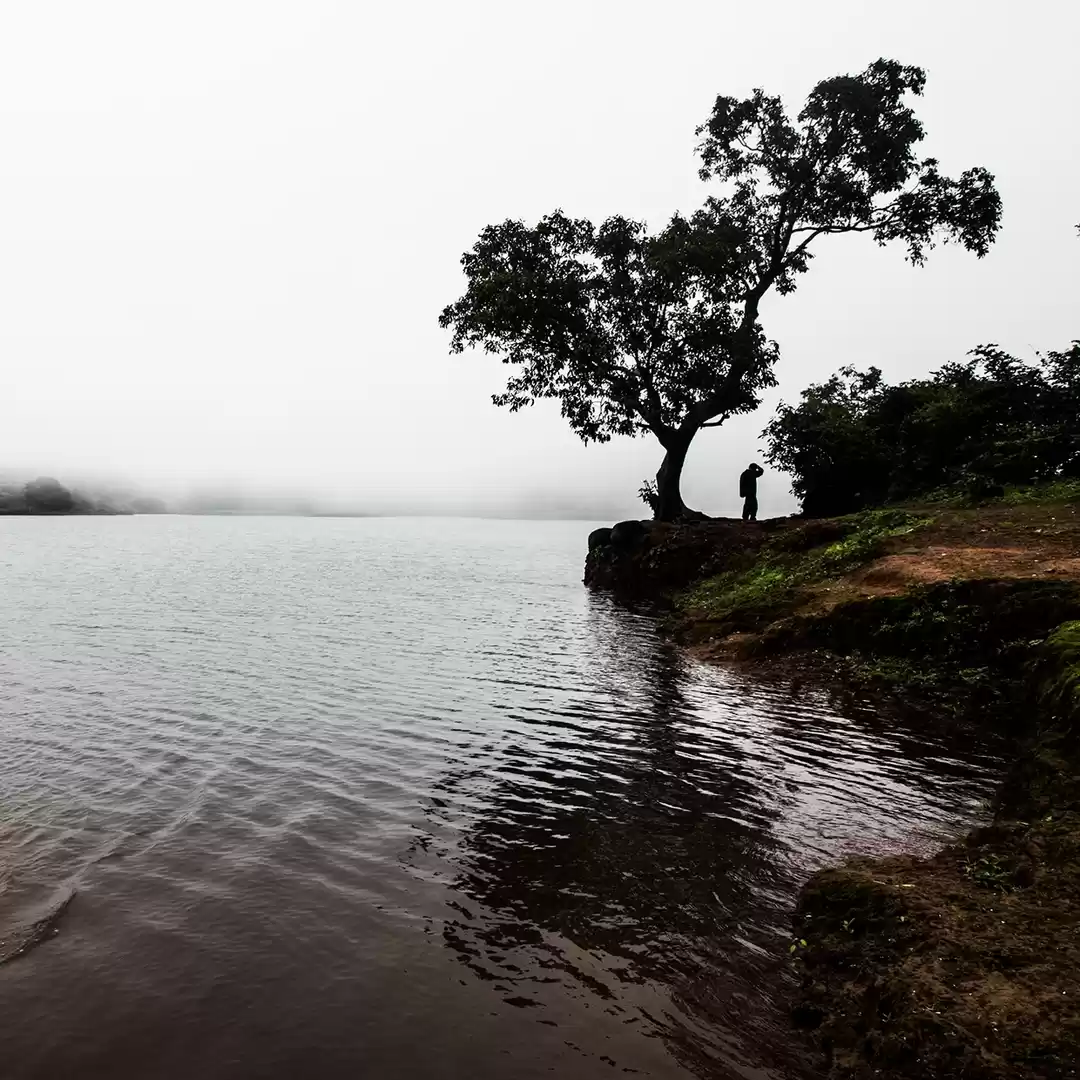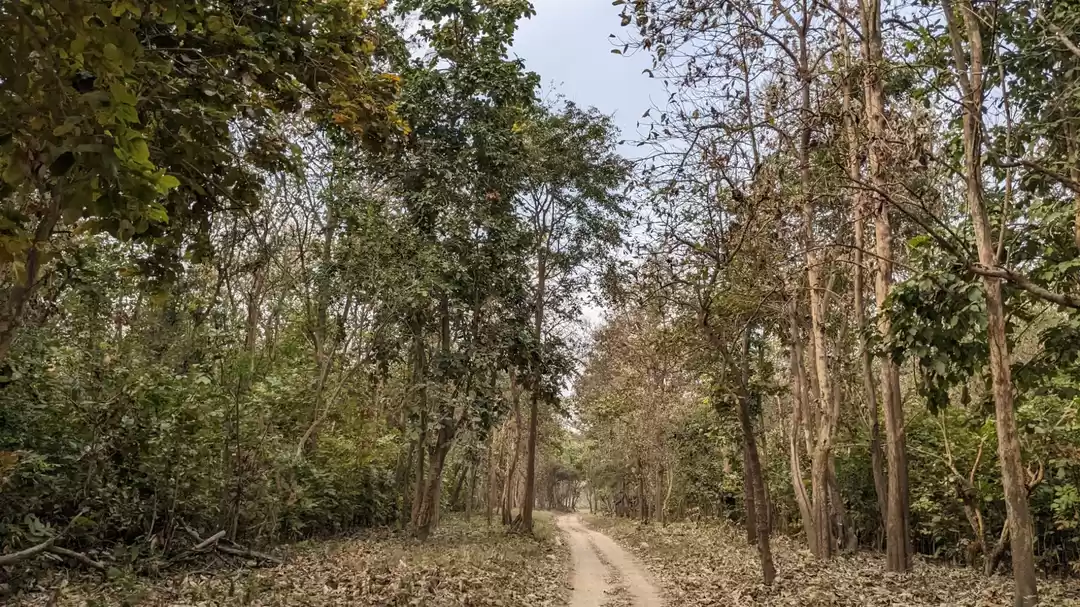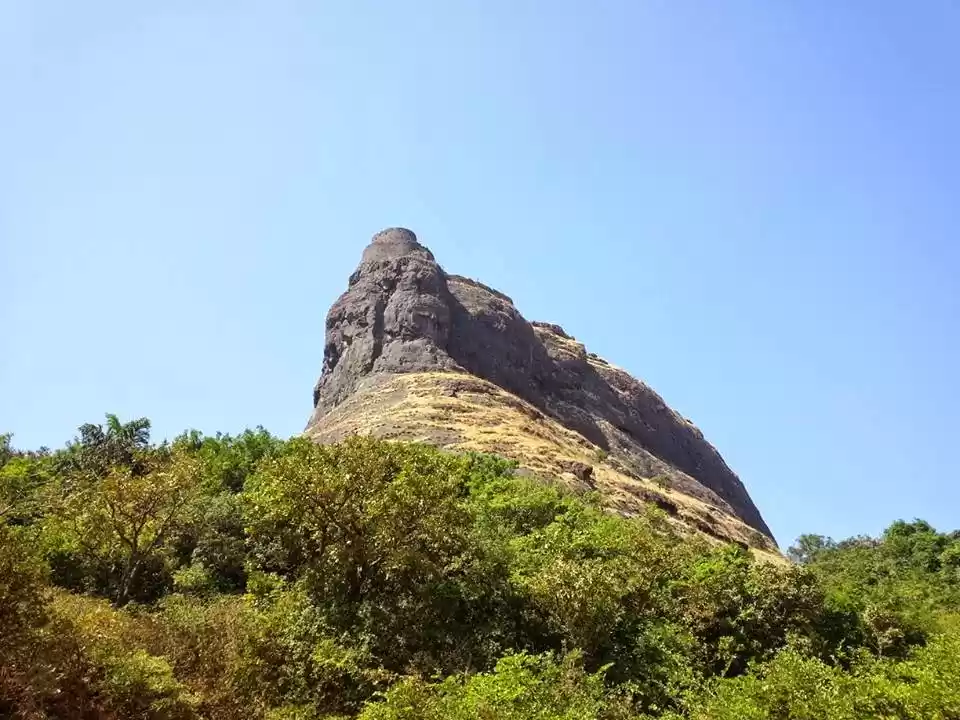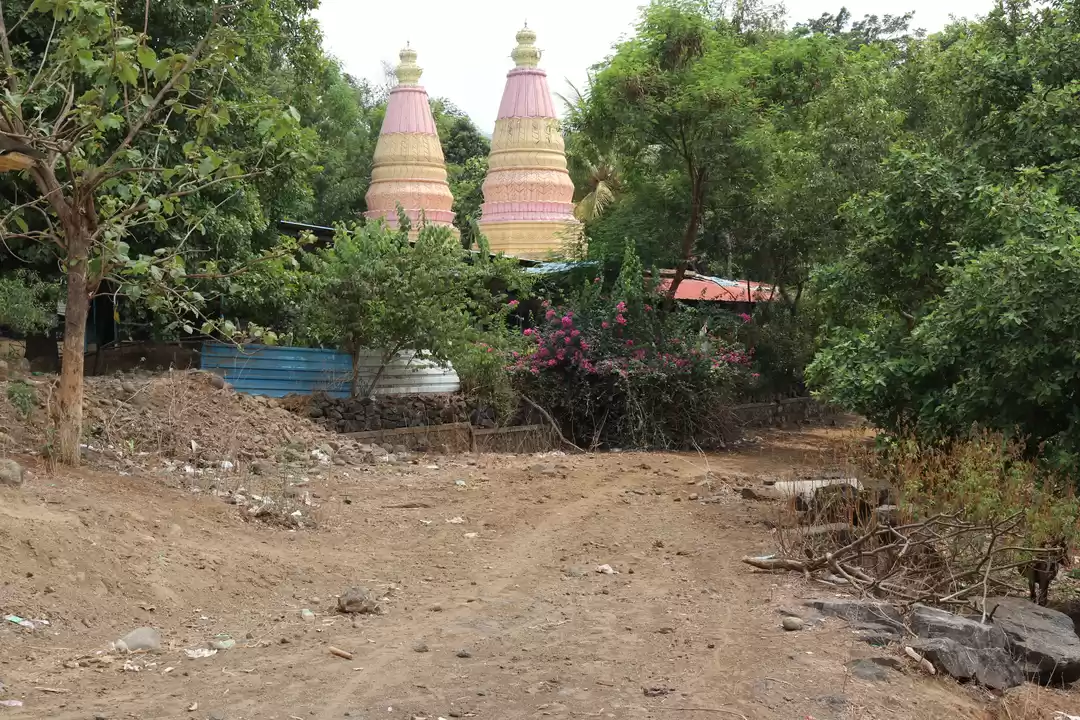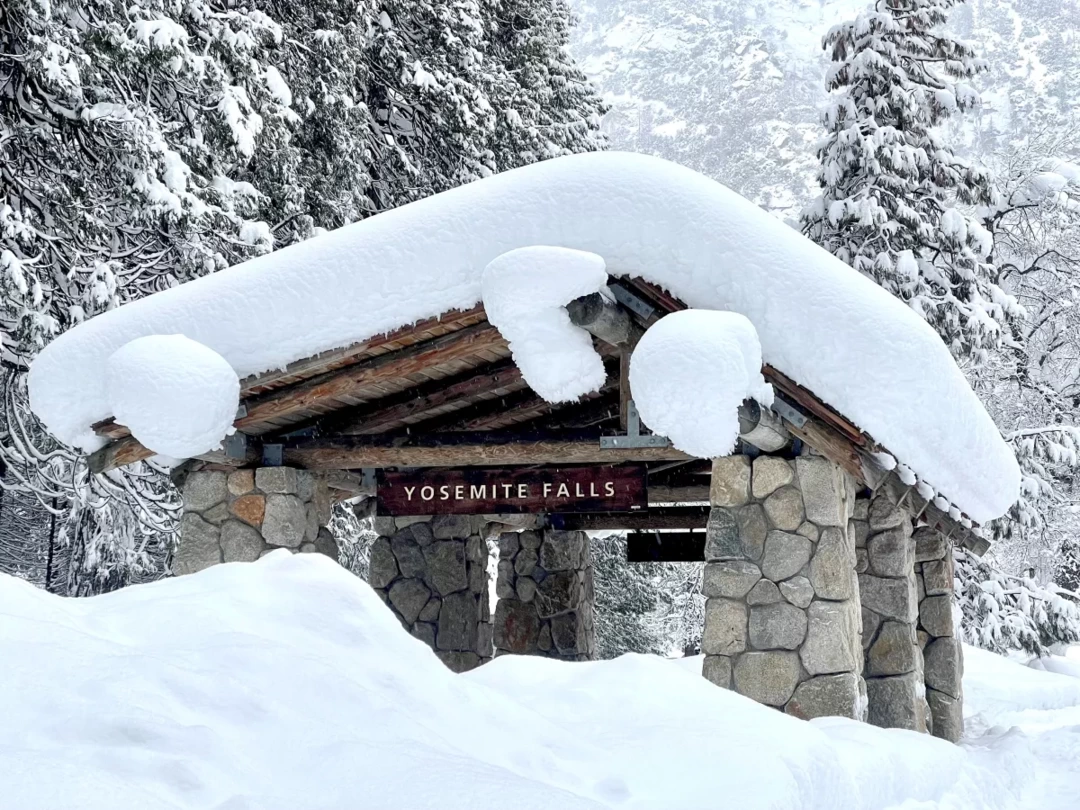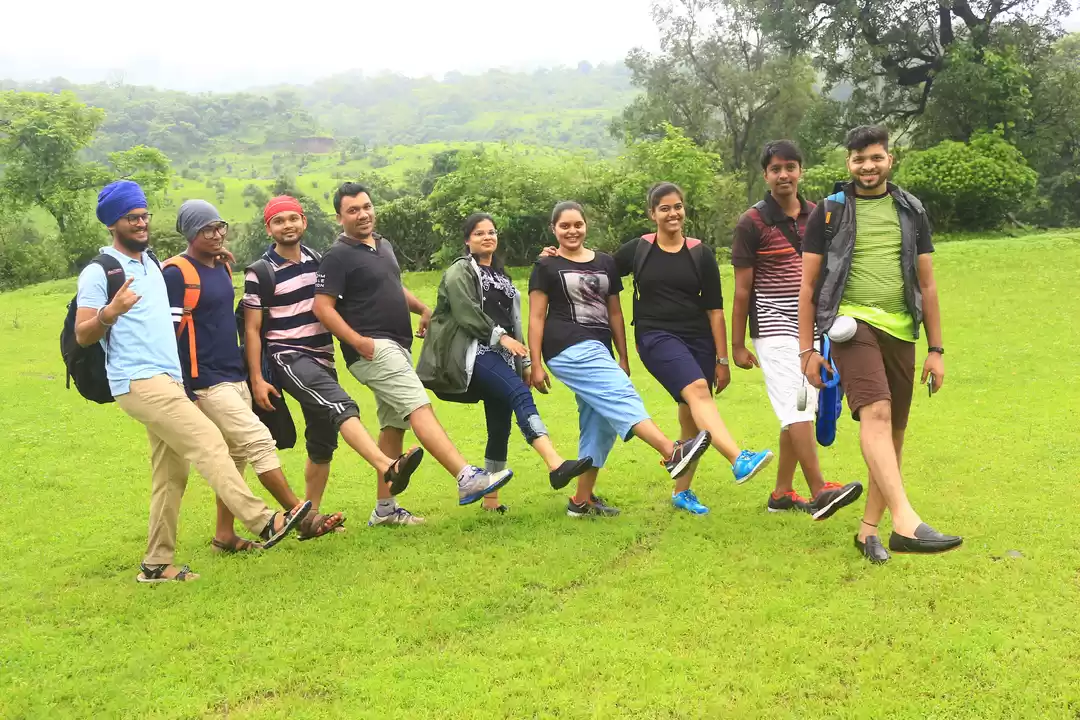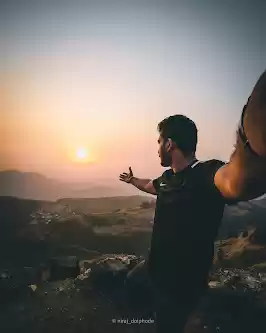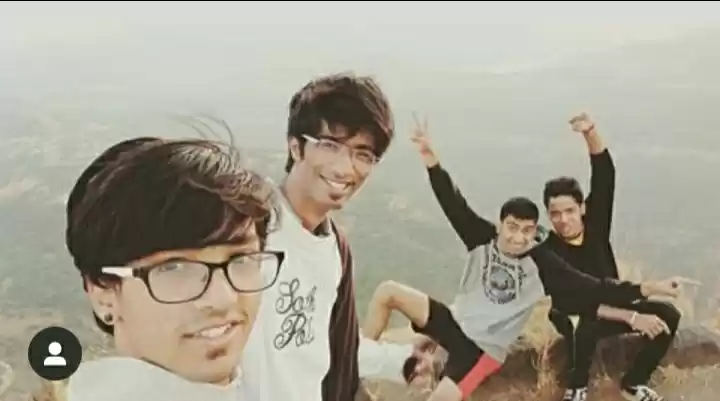Are you looking for an adventurous and rewarding getaway from the hustle and bustle of the city life? Do you want to explore the rich heritage and the stunning landscapes of the Western Ghats? If yes, then Rajmachi Trek is the perfect choice for you.
Rajmachi Trek is one of the most popular and thrilling treks near Mumbai and Pune, attracting thousands of nature lovers and history buffs every year. The trek takes you to the Rajmachi Fort, a 17th-century fortification that served as a strategic outpost for the Maratha Empire. The fort is located on a plateau between two hills, Shreevardhan and Manaranjan, offering panoramic views of the surrounding valleys, forests, waterfalls, and lakes.
The Rajmachi Trek is not only about the fort, but also about the journey itself. The trek offers two routes to reach the fort, each with its own challenges and rewards. The Lonavala Route is shorter and easier, but less scenic, while the Karjat Route is longer and harder, but more scenic. Along the way, you will encounter various attractions, such as the Kondane Caves, a group of ancient Buddhist rock-cut caves, and the Udhewadi Village, a quaint hamlet that hosts the trekkers and offers a glimpse of the rural life.
In this article, we will tell you everything you need to know about the Rajmachi Trek, such as how to reach, what to see, where to stay, what to eat, etc. We will also give you some tips and advice on how to make the most of your Rajmachi Trek experience. So, without further ado, let’s get started.
Rajmachi Trek Difficulty
The first thing you need to know about the Rajmachi Trek is the difficulty level. The difficulty of the trek depends on several factors, such as the route you choose, the weather conditions, your fitness level, your trekking experience, etc.
The Rajmachi Trek offers two routes to reach the fort, the Lonavala Route and the Karjat Route. The Lonavala Route is shorter and easier, covering a distance of about 15 km (one way) and taking about 3 to 4 hours to complete. The route is mostly flat and well-marked, with a few gentle ascents and descents. The route is suitable for beginners and families, as well as for those who want to save time and energy.
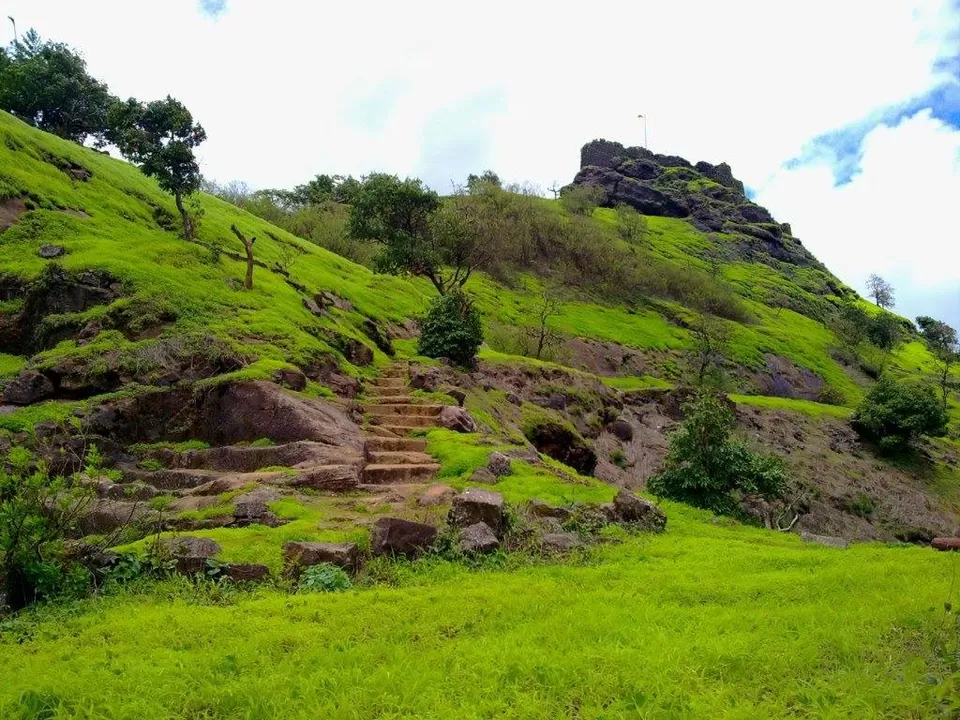
The Karjat Route is longer and harder, covering a distance of about 18 km (one way) and taking about 5 to 6 hours to complete. The route is more rugged and steep, with a lot of ups and downs, and some rocky patches. The route is more scenic and adventurous, passing through dense forests, streams, waterfalls, and villages. The route is suitable for experienced and fit trekkers, as well as for those who want to enjoy the beauty and thrill of the trek.
The weather conditions also affect the difficulty of the trek, as they can change the terrain and the visibility. The Rajmachi Trek can be done throughout the year, but each season has its own pros and cons. The summer season (March to May) is hot and dry, making the trek more tiring and less enjoyable. The monsoon season (June to September) is wet and humid, making the trek more slippery and risky, but also more lush and refreshing. The winter season (October to February) is cold and pleasant, making the trek more comfortable and clear, but also more crowded and expensive.
Your fitness level and trekking experience also play a role in the difficulty of the trek, as they determine your stamina and endurance. The Rajmachi Trek is not a very demanding trek, but it does require a moderate level of fitness and some prior trekking experience. You should be able to walk for at least 4 to 6 hours a day, carrying a backpack of about 10 kg, and cope with the altitude and the weather changes. You should also be familiar with the basic trekking skills, such as navigation, camping, first aid, etc.
To prepare for the trek, you should do some physical exercises, such as jogging, cycling, swimming, etc., at least a month before the trek. You should also do some mental exercises, such as meditation, yoga, etc., to boost your confidence and motivation. You should also pack wisely, carrying only the essential items, such as clothes, shoes, water, snacks, medicines, etc., and avoiding any unnecessary items, such as books, gadgets, etc.
Rajmachi Trek Route
The next thing you need to know about the Rajmachi Trek is the route. The route is the path you follow to reach the fort, and it can make or break your trekking experience. The route can vary in terms of distance, time, scenery, attractions, etc., and you should choose the one that suits your preference, skill, budget, etc.
The Rajmachi Trek offers two routes to reach the fort, the Lonavala Route and the Karjat Route. Both routes start from different points, but end at the same destination, the Rajmachi Fort. You can choose either route, or even combine both routes, depending on your availability and interest. Here is a brief description of each route, along with their pros and cons.
Lonavala Route
The Lonavala Route is the shorter and easier route to reach the Rajmachi Fort. The route starts from the Lonavala Railway Station, which is well-connected by trains and buses from Mumbai and Pune. From the station, you can take a local bus or a shared jeep to reach the Tungarli Dam, which is about 5 km away. The dam is the starting point of the trek, and you can see a signboard indicating the direction to the fort.

From the dam, you have to follow a dirt road that leads to the Rajmachi Village, which is about 10 km away. The road is mostly flat and well-marked, with a few gentle ascents and descents. The road passes through some open fields, dry forests, and small villages, offering some views of the surrounding hills and valleys. The road is also frequented by vehicles, so you have to be careful and watch out for the traffic.
The Rajmachi Village is the end point of the trek, and you can see the Rajmachi Fort looming over the village. The village is also known as Udhewadi, and it is a quaint hamlet that hosts the trekkers and offers some basic facilities, such as food, water, accommodation, etc. The village is also the base camp for exploring the fort and the nearby attractions, such as the Kondane Caves and the Shreevardhan Fort.
Karjat Route
The Karjat Route is the longer and harder route to reach the Rajmachi Fort. The route starts from the Kondhane Village, which is about 15 km away from the Karjat Railway Station. The station is well-connected by trains and buses from Mumbai and Pune. From the station, you can take a local bus or a shared jeep to reach the Kondhane Village, which is the starting point of the trek.
From the village, you have to follow a trail that leads to the Kondane Caves, which are about 2 km away. The caves are a group of ancient Buddhist rock-cut caves, dating back to the 1st century BC. The caves are a major attraction of the trek, and you can see some sculptures, carvings, and paintings depicting the life and teachings of Buddha. The caves are also a good place to take a break and refresh yourself.

From the caves, you have to follow a trail that leads to the Rajmachi Village, which is about 16 km away. The trail is more rugged and steep, with a lot of ups and downs, and some rocky patches. The trail passes through dense forests, streams, waterfalls, and villages, offering some views of the surrounding hills and valleys. The trail is also less frequented by vehicles, so you have more peace and solitude.
The Rajmachi Village is the end point of the trek, and you can see the Rajmachi Fort looming over the village. The village is also known as Udhewadi, and it is a quaint hamlet that hosts the trekkers and offers some basic facilities, such as food, water, accommodation, etc.
Rajmachi Trek Attractions
The Rajmachi Trek is not only about the fort, but also about the attractions and sights to see along the way. The trek offers a variety of attractions, such as historical, cultural, natural, and spiritual, that will enrich your trekking experience and make it more memorable. Here are some of the main attractions of the Rajmachi Trek, along with their history and significance.
Rajmachi Fort
The Rajmachi Fort is the main attraction and the destination of the Rajmachi Trek. The fort is a 17th-century fortification that served as a strategic outpost for the Maratha Empire. The fort is located on a plateau between two hills, Shreevardhan and Manaranjan, at an altitude of about 2700 feet above sea level. The fort offers panoramic views of the surrounding valleys, forests, waterfalls, and lakes, such as the Ulhas River, the Duke’s Nose, the Karjat Valley, the Bhimashankar Hills, the Pawna Lake, etc.
The fort consists of two smaller forts, Shreevardhan and Manaranjan, each with its own ramparts, gateways, bastions, water tanks, temples, etc. The forts are connected by a narrow saddle, which also houses the Rajmachi Village. The forts are named after the brothers Shreevardhan and Manaranjan, who were the sons of Prabhu, the founder of the Prabhu Deshastha Brahmin community.
The fort was built by the Satavahana dynasty in the 2nd century BC, and later occupied by various rulers, such as the Nizamshahi, the Mughals, the Marathas, and the British. The fort witnessed several battles and sieges, such as the Battle of Rajmachi in 1657, when Shivaji Maharaj captured the fort from the Adilshahi general Bahlol Khan, and the Siege of Rajmachi in 1818, when the British forces under Colonel Prother attacked the fort and forced the Maratha garrison to surrender.
The fort is a testament to the glorious history and the architectural marvel of the region, and it is a must-visit for any history lover and adventure seeker. The fort is also a popular spot for photography, birdwatching, stargazing, and camping.
Kondane Caves
The Kondane Caves are a group of ancient Buddhist rock-cut caves, dating back to the 1st century BC. The caves are located near the Kondhane Village, which is the starting point of the Karjat Route. The caves are a major attraction of the trek, and they are about 2 km away from the village.

The caves consist of 16 excavations, including chaityas (prayer halls), viharas (monasteries), and cells (dormitories). The caves are adorned with some sculptures, carvings, and paintings depicting the life and teachings of Buddha. The caves also have some inscriptions in Brahmi script, which mention the names and donations of the patrons and the monks.
The caves are a reflection of the ancient culture and the religious beliefs of the region, and they are a must-see for any culture lover and art lover. The caves are also a good place to take a break and refresh yourself, as they offer some shade and coolness.
Shreevardhan Fort
The Shreevardhan Fort is one of the two smaller forts that make up the Rajmachi Fort. The fort is located on the Shreevardhan Hill, which is the higher and the larger of the two hills. The fort is about 1 km away from the Rajmachi Village, and it takes about 30 minutes to reach the fort from the village.
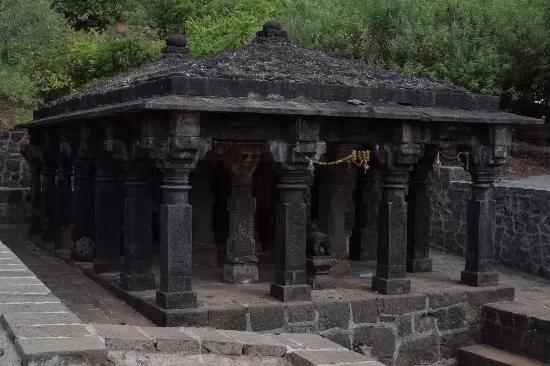
The fort is named after Shreevardhan, who was the son of Prabhu, the founder of the Prabhu Deshastha Brahmin community. The fort was built by the Satavahana dynasty in the 2nd century BC, and later occupied by various rulers, such as the Nizamshahi, the Mughals, the Marathas, and the British. The fort was the main seat of power and the residence of the Maratha generals, such as Sardar Phadke and Sardar Kibe.
The fort has some structures and features, such as ramparts, gateways, bastions, water tanks, temples, etc. The fort also has a secret tunnel that leads to the Kondane Caves, which was used as an escape route in times of emergency. The fort offers splendid views of the surrounding valleys, forests, waterfalls, and lakes, such as the Ulhas River, the Duke’s Nose, the Karjat Valley, the Bhimashankar Hills, the Pawna Lake, etc.
The fort is a symbol of the bravery and the pride of the region, and it is a must-visit for any history lover and adventure lover. The fort is also a popular spot for photography, birdwatching, stargazing, and camping.
Udhewadi Village
The Udhewadi Village is a quaint hamlet that hosts the trekkers and offers some basic facilities, such as food, water, accommodation, etc. The village is also known as Rajmachi Village, and it is located on the saddle between the two hills, Shreevardhan and Manaranjan. The village is about 15 km away from the Tungarli Dam (Lonavala Route) and 16 km away from the Kondane Caves (Karjat Route).
The village is home to about 60 families, who belong to the Mahadev Koli tribe. The villagers are mostly farmers, who grow rice, vegetables, and fruits, such as mangoes, jackfruits, etc. The villagers are also hospitable and friendly, who welcome the trekkers and offer them some services, such as food, water, accommodation, guide, etc.
The village has some options and facilities for staying at Rajmachi, such as camping, homestays, hotels, etc. The village also has some attractions and sights to see, such as temples, ponds, wells, etc. The village is also the base camp for exploring the fort and the nearby attractions, such as the Kondane Caves and the Shreevardhan Fort.
The village is a glimpse of the rural life and the culture of the region, and it is a must-visit for any nature lover and culture lover. The village is also a good place to relax and rejuvenate, as it offers some peace and tranquility.
Rajmachi Trek Cost
The Rajmachi Trek is a budget-friendly trek, as it does not involve a lot of expenses. The trek can be done in a day or two, depending on your availability and interest. The trek can also be done solo or in a group, depending on your preference and safety. The trek can also be done throughout the year, but each season has its own advantages and disadvantages.
The Rajmachi Trek involves some costs, such as transportation, accommodation, food, entry fees, guide fees, etc. The costs can vary depending on the route you choose, the season you visit, the option you prefer, etc.
Lonavala Route
The Lonavala Route is the cheaper and easier route to reach the Rajmachi Fort. The route starts from the Lonavala Railway Station, which is well-connected by trains and buses from Mumbai and Pune. The transportation cost from Mumbai or Pune to Lonavala is about Rs. 100 to Rs. 200 per person, depending on the mode and the time of travel.
From the Lonavala Railway Station, you can take a local bus or a shared jeep to reach the Tungarli Dam, which is about 5 km away. The transportation cost from Lonavala to Tungarli Dam is about Rs. 20 to Rs. 50 per person, depending on the mode and the availability of transport.
From the Tungarli Dam, you have to trek to the Rajmachi Village, which is about 10 km away. The trekking cost is nil, as you do not need any guide or permit to trek on this route. However, you may have to pay some entry fees or donations at some places, such as temples, water tanks, etc. The entry fees or donations are nominal, and they are optional.
At the Rajmachi Village, you have to stay for the night, as there is no transport available after sunset. The village has some options and facilities for staying, such as camping, homestays, hotels, etc. The accommodation cost ranges from Rs. 100 to Rs. 500 per person, depending on the option and the season. The village also has some options and varieties of food available, such as local cuisine, snacks, beverages, etc. The food cost ranges from Rs. 50 to Rs. 200 per person, depending on the option and the quantity.
The next day, you have to explore the fort and the nearby attractions, such as the Kondane Caves and the Shreevardhan Fort. The exploration cost is nil, as you do not need any guide or permit to explore these places. However, you may have to pay some entry fees or donations at some places, such as caves, temples, etc. The entry fees or donations are nominal, and they are optional.
After exploring the fort and the attractions, you have to trek back to the Tungarli Dam, which is about 10 km away. The trekking cost is nil, as you do not need any guide or permit to trek on this route. However, you may have to pay some entry fees or donations at some places, such as temples, water tanks, etc. The entry fees or donations are nominal, and they are optional.
From the Tungarli Dam, you can take a local bus or a shared jeep to reach the Lonavala Railway Station, which is about 5 km away. The transportation cost from Tungarli Dam to Lonavala is about Rs. 20 to Rs. 50 per person, depending on the mode and the availability of transport.
From the Lonavala Railway Station, you can take a train or a bus to reach Mumbai or Pune. The transportation cost from Lonavala to Mumbai or Pune is about Rs. 100 to Rs. 200 per person, depending on the mode and the time of travel.
The total cost of the Lonavala Route is about Rs. 400 to Rs. 1200 per person, depending on the mode, option, season, etc. The cost can be reduced by opting for public transport, camping, homestays, etc. The cost can also be reduced by sharing the expenses with a group of friends or fellow trekkers.
Karjat Route
The Karjat Route is the more expensive and harder route to reach the Rajmachi Fort. The route starts from the Kondhane Village, which is about 15 km away from the Karjat Railway Station. The station is well-connected by trains and buses from Mumbai and Pune. The transportation cost from Mumbai or Pune to Karjat is about Rs. 150 to Rs. 300 per person, depending on the mode and the time of travel.
From the Karjat Railway Station, you can take a local bus or a shared jeep to reach the Kondhane Village, which is the starting point of the trek. The transportation cost from Karjat to Kondhane is about Rs. 50 to Rs. 100 per person, depending on the mode and the availability of transport.
From the Kondhane Village, you have to trek to the Rajmachi Village, which is about 16 km away. The trekking cost is nil, as you do not need any guide or permit to trek on this route. However, you may have to pay some entry fees or donations at some places, such as caves, temples, etc. The entry fees or donations are nominal, and they are optional.
At the Rajmachi Village, you have to stay for the night, as there is no transport available after sunset. The village has some options and facilities for staying, such as camping, homestays, hotels, etc. The accommodation cost ranges from Rs. 100 to Rs. 500 per person, depending on the option and the season. The village also has some options and varieties of food available, such as local cuisine, snacks, beverages, etc. The food cost ranges from Rs. 50 to Rs. 200 per person, depending on the option and the quantity.
The next day, you have to explore the fort and the nearby attractions, such as the Kondane Caves and the Shreevardhan Fort. The exploration cost is nil, as you do not need any guide or permit to explore these places. However, you may have to pay some entry fees or donations at some places, such as caves, temples, etc. The entry fees or donations are nominal, and they are optional.
After exploring the fort and the attractions, you have to trek back to the Kondhane Village, which is about 16 km away. The trekking cost is nil, as you do not need any guide or permit to trek on this route. However, you may have to pay some entry fees or donations at some places, such as caves, temples, etc. The entry fees or donations are nominal, and they are optional.
From the Kondhane Village, you can take a local bus or a shared jeep to reach the Karjat Railway Station, which is about 15 km away. The transportation cost from Kondhane to Karjat is about Rs. 50 to Rs. 100 per person, depending on the mode and the availability of transport.
From the Karjat Railway Station, you can take a train or a bus to reach Mumbai or Pune. The transportation cost from Karjat to Mumbai or Pune is about Rs. 150 to Rs. 300 per person, depending on the mode and the time of travel.
The total cost of the Karjat Route is about Rs. 600 to Rs. 1500 per person, depending on the mode, option, season, etc. The cost can be reduced by opting for public transport, camping, homestays, etc. The cost can also be reduced by sharing the expenses with a group of friends or fellow trekkers.
Rajmachi Trek Best Time
The Rajmachi Trek can be done throughout the year, but each season has its own advantages and disadvantages. The season can affect the difficulty, scenery, availability, and cost of the trek, and you should choose the one that suits your preference, availability, safety, etc.
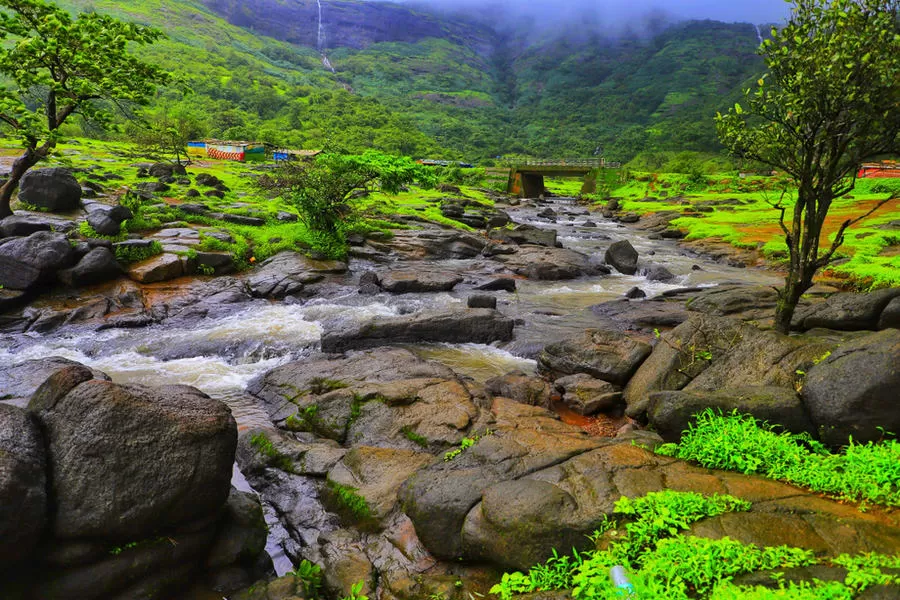
Summer season
The summer season is the least preferred season for the Rajmachi Trek, as it offers the least variety and excitement. The scenery can be dull and dusty, as the vegetation can be dry and brown. The waterfalls can be dry or reduced, and the lakes can be low or muddy. The views can be hazy or obscured, and the wildlife can be scarce or hidden.
The summer season is the least crowded and noisy season for the Rajmachi Trek, as it attracts the least number of trekkers and tourists. The availability and cost of the facilities can be high, as the demand can be low. The transport, accommodation, food, etc. can be easily available and affordable, and you can have more privacy and flexibility.
Monsoon Season
The monsoon season (June to September) is the wettest and most humid season for the Rajmachi Trek. The temperature can range from 20°C to 30°C, and the humidity can be high. The trek can be more slippery and risky, as the rain can be heavy and frequent.
The monsoon season is the most preferred season for the Rajmachi Trek, as it offers the most variety and excitement. The scenery can be lush and green, as the vegetation can be fresh and blooming. The waterfalls can be full and roaring, and the lakes can be high and clear. The views can be clear and stunning, and the wildlife can be abundant and active.
The monsoon season is the most crowded and noisy season for the Rajmachi Trek, as it attracts the most number of trekkers and tourists. The availability and cost of the facilities can be low, as the demand can be high. The transport, accommodation, food, etc. can be scarce and expensive, and you can have less privacy and flexibility.
The trek can be done throughout the year, but each season has its own advantages and disadvantages. The trek can be done in a day or two, depending on your availability and interest. The trek can also be done solo or in a group, depending on your preference and safety. The trek can also be done on a budget, as it does not involve a lot of expenses.
We hope this article has given you all the information you need to plan your Rajmachi Trek. We hope you have a great time and a memorable adventure. If you have any questions or feedback, please feel free to leave a comment below.
If you have already done the Rajmachi Trek, please share your experience and tips with us. If you want to read more articles on similar topics, please check out our website. Thank you for reading and happy trekking.

